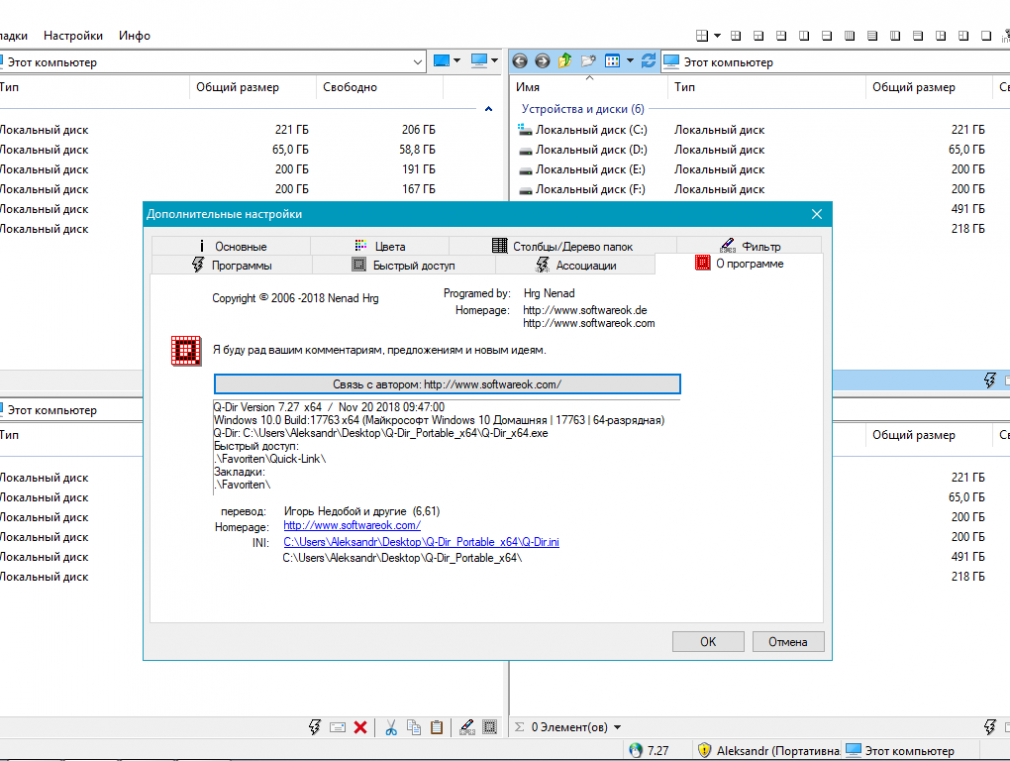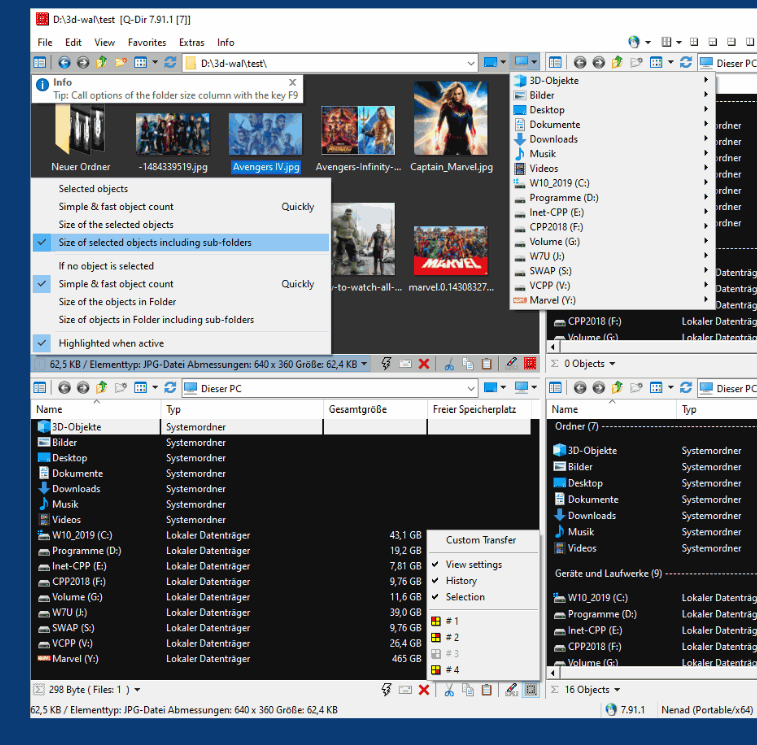

In Windows Explorer, you can display the amount of space that a certain folder with its subfolders occupies, through its properties menu. Folder size viewĪs an admin, you always have to fight with disk space shortage.

Unlike the highlight-filters, the color filter is always active once you enabled it in the options menu. This feature makes it easy to spot certain file categories once you got used to the color scheme. The color filter allows you to assign a certain color to each file type. If you think that you will need the filter again, then you can store it as a favorite. Q-Dir also supports negative filters and it is possible to only display the filtered files.

You can then copy the selected files or perform any other action. For instance, if you want to select all TXT and DOC files you would just enter *.txt, *.doc. It allows you to select multiple files or folders using wildcards. The highlight-filter is certainly a feature that every admin will find to be helpful. Note that this feature has to be enabled first (Extras menu). Also useful is the Vista-like address bar that allows you to easily navigate to folders at higher levels (just in case you use Windows XP). It is also possible to add a navigation pane to all folder panes. The tree-view in the navigation pane is always active for the currently selected folder pane. This saves a lot of space, without sacrificing navigation convenience. Q-Dir allows you to have just one navigation pane on the left hand side, which can be used for all opened folder panes. I like that Q-Dir allows me to copy all settings, including the folder path, for a certain pane to other panes with just a mouse click. For instance, you can display the contents of four different folders with just a mouse click. The toolbar has an icon for every thinkable layout. Q-Dir supports multiple panes that can be quickly switched on or off. The single pane interface of Windows Explorer is not really made for this purpose.

Admins have to copy and move files all day.


 0 kommentar(er)
0 kommentar(er)
